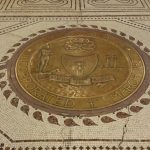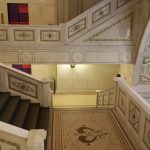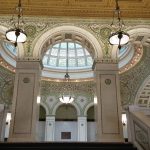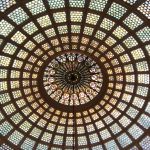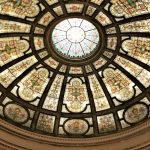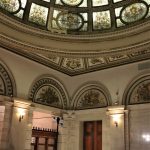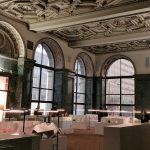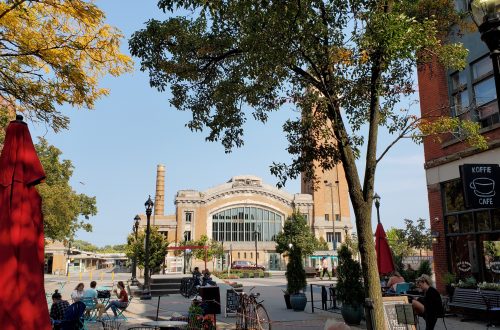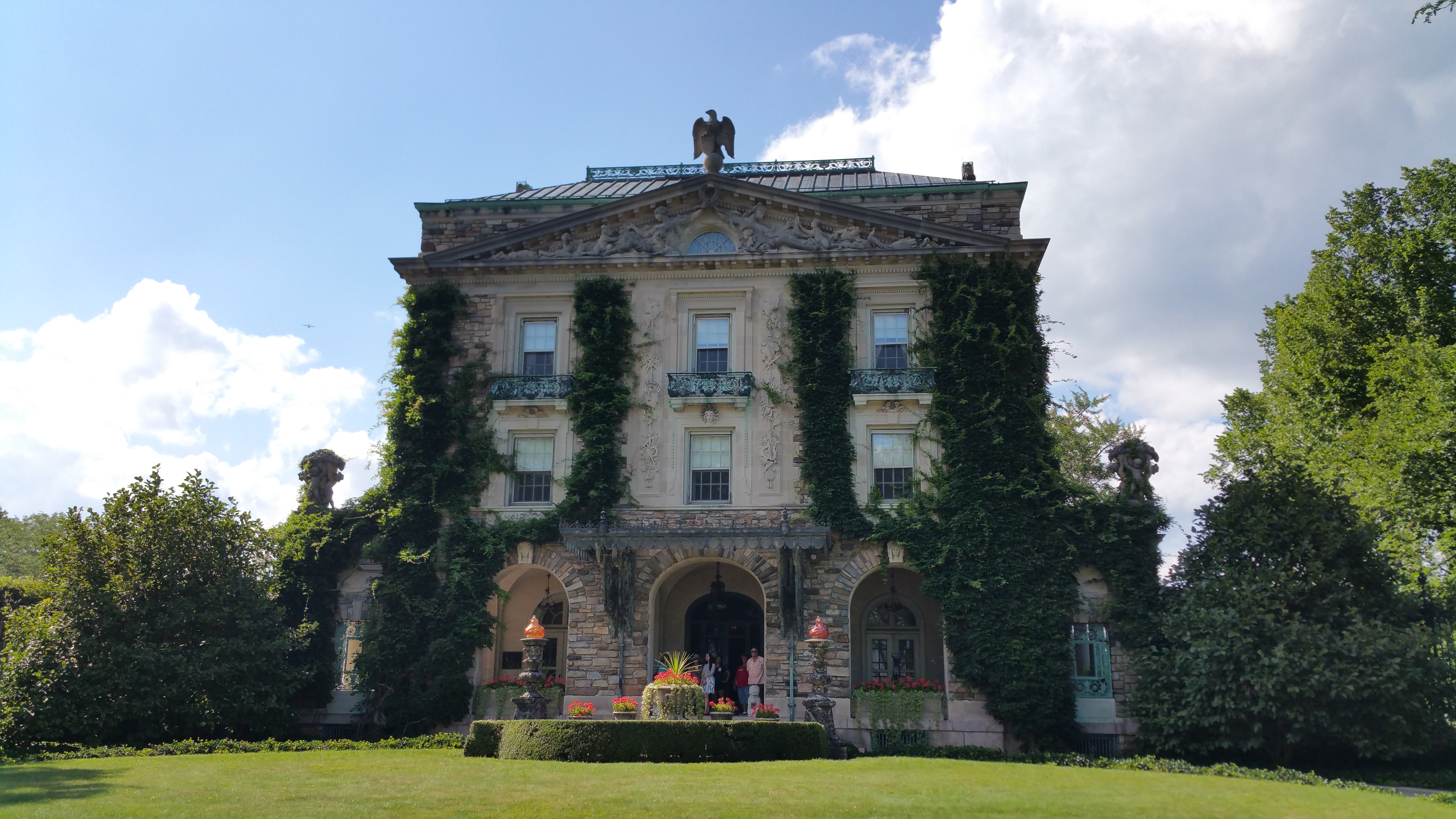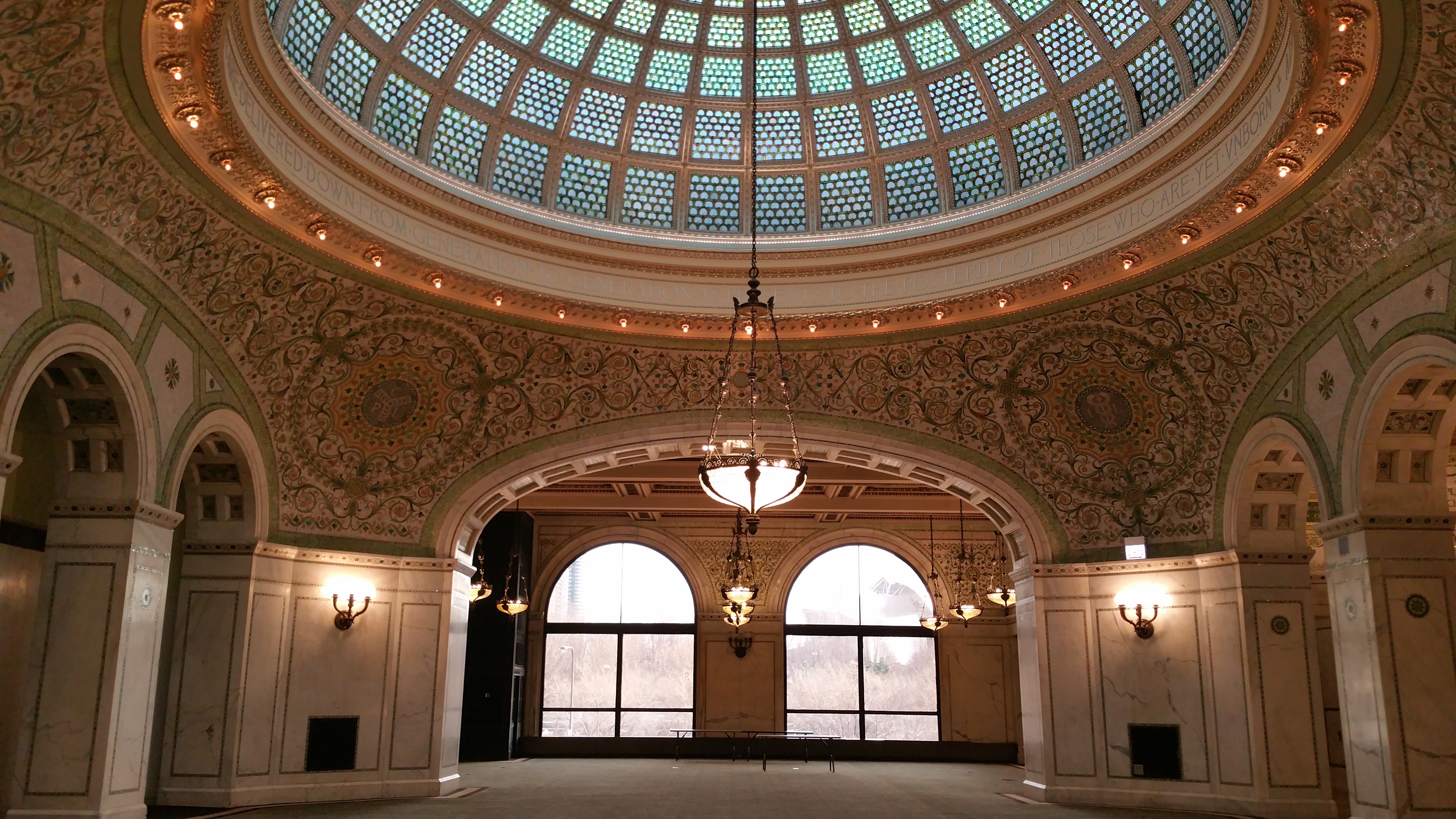
Chicago Cultural Center- Chicago, IL
The Chicago Cultural Center, once the city’s Central Public Library, may just be the most impressive building in Chicago. Which is a bold statement, as Chicago is nothing short of an architectural wonderland. Completed in 1897, the quality of construction and attention to detail is beyond breathtaking. A beautifully preserved piece of the past, it continues to inspire all who visit today.
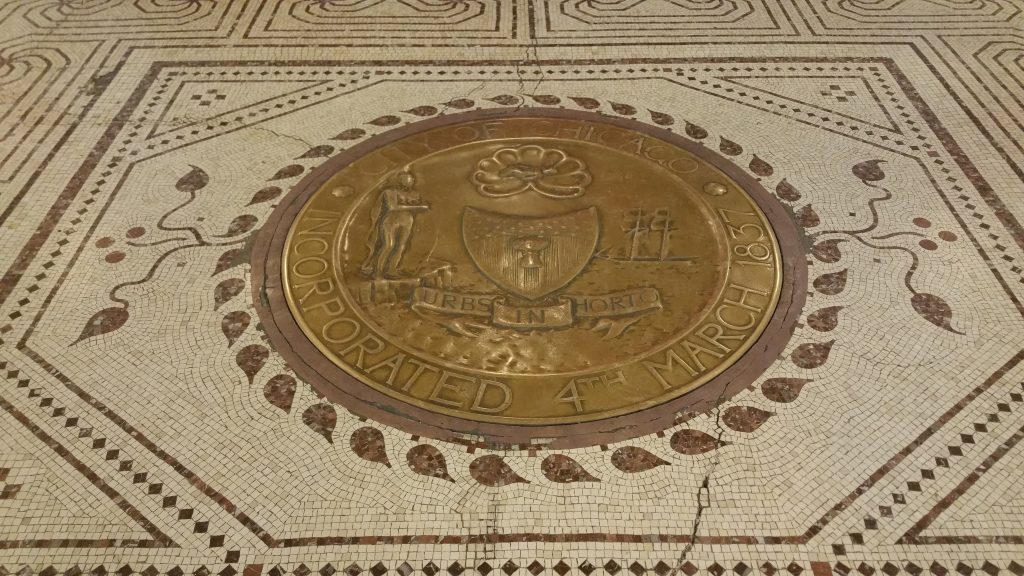
The Chicago Public Library system itself was founded after the city lost its entire circulating book collection in the Great Fire of 1871. Sympathetic to their plight, books poured into the city from around the world. British authors and statesmen alone sent over 8,000 volumes, including signed books from Queen Victoria, Charles Darwin, and Alfred Lord Tennyson. By 1891, Chicago had the largest library system in the country, and plans were being made to construct a grand building to house their massive collection.
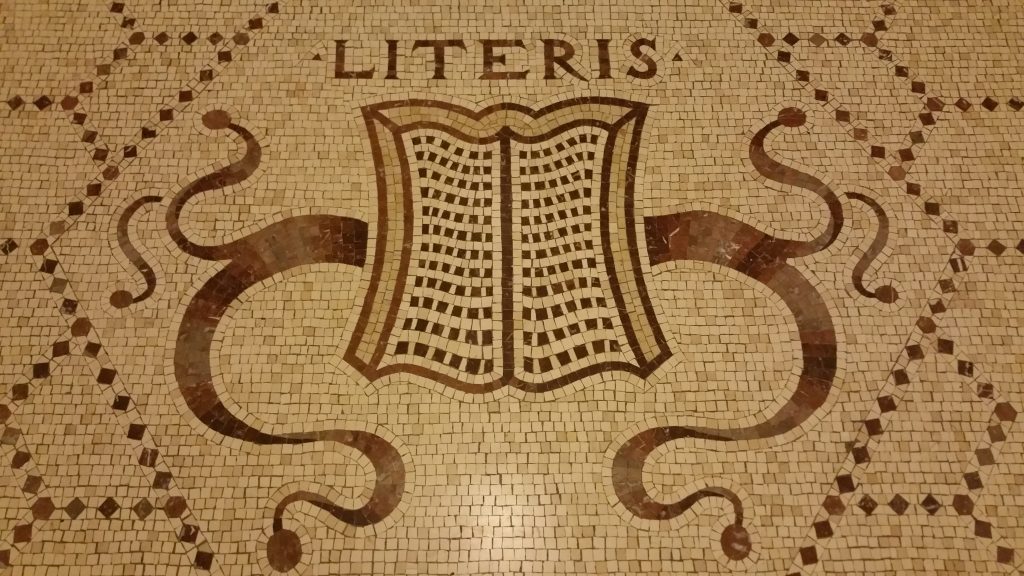
Although a location was selected for the new library, a portion of the desired land had already been given to a group of Civil War veterans by the state legislature, for use as a war memorial. In order to move forward, a compromise was reached where one building would serve both purposes, housing both the library and a memorial hall for Northern Civil War soldiers. To finance the project, a %1 tax was levied on all citizens.
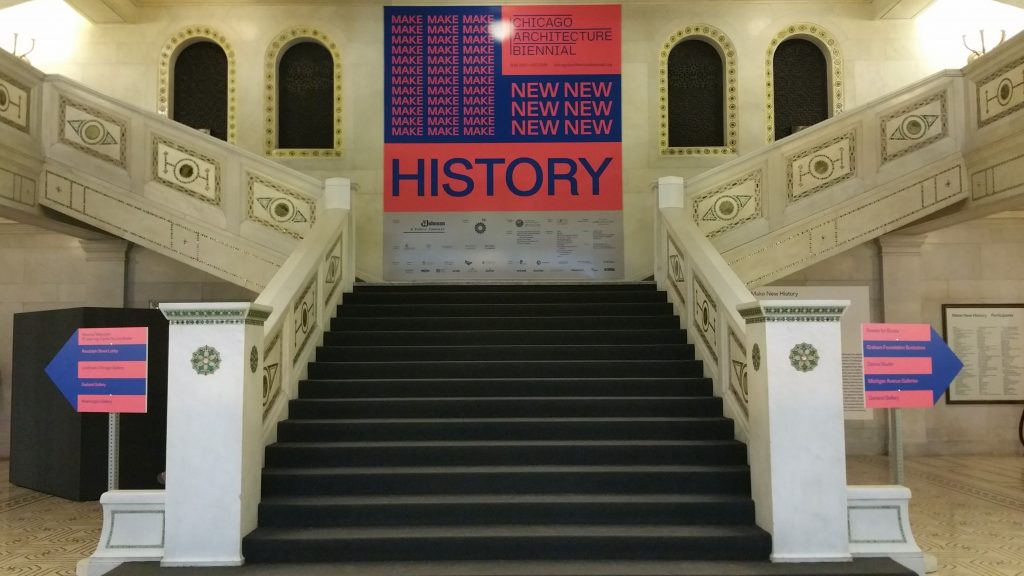
After reviewing several bids, the library board awarded the contract to the Boston architectural firm of Shepley Rutan and Coolidge, who had just finished building the The Art Institute of Chicago. On July 27, 1892, construction started on the Neo-Classical building, which would take over 5 years to complete. The final result was nothing short of magnificent. Although the exterior, constructed of 3 foot thick Indiana limestone, was uniform, the two entrances led to completely different, but equally grand spaces.
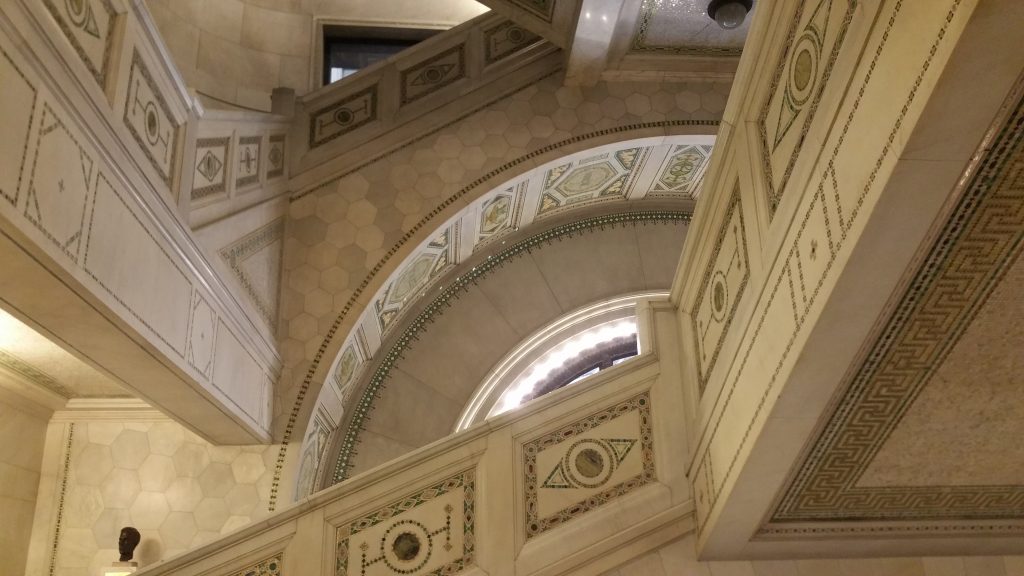
The Washington Street doors opened to an opulent 45 foot Roman inspired lobby, centered around a grand Carrara marble staircase. Matching marble tile covered the walls, inlaid with intricate mosaics executed by the Tiffany Studios. Use of materials such as mother-of-pearl, Favrile glass, and gold leaf insured the walls sparkled like jewels. Over 100 years later, they still do.
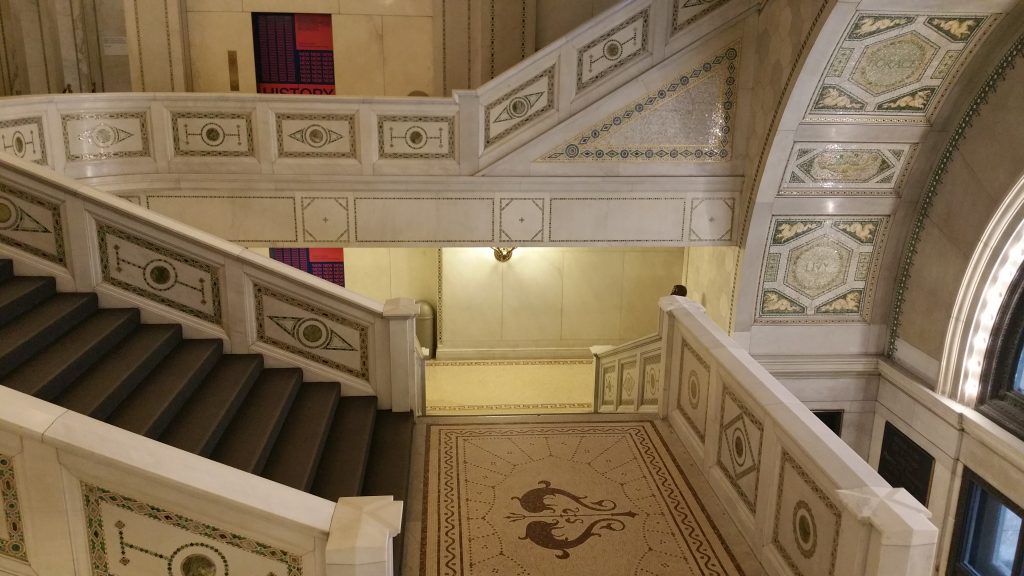
One the 3rd floor, intricate inlaid arches opened into the Preston Bradley Hall, where patrons would receive requested library materials. For those who adore arches, these are among the most elegant and stunning you are likely to find. Substantial yet delicate, they perfectly frame the magnificent hall dome.
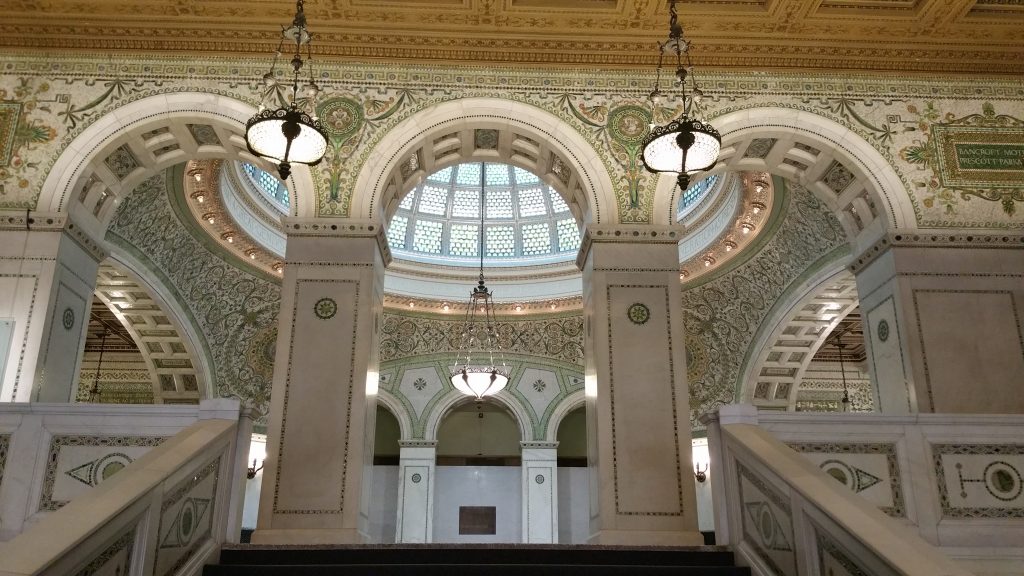
The dome itself will certainly stop you in your tracks. Made of over 30,000 pieces of fish scale shaped Favrile glass, and 38 feet in diameter, it is the largest Tiffany dome in the world. It exudes grandeur and grace, and absolutely glows. In addition to the dome, the room’s wall sconces, lighting fixtures and chandeliers were also Tiffany creations. Flanking each side of the dome, famous quotations are inlaid in marble. It is nothing short of sublime.
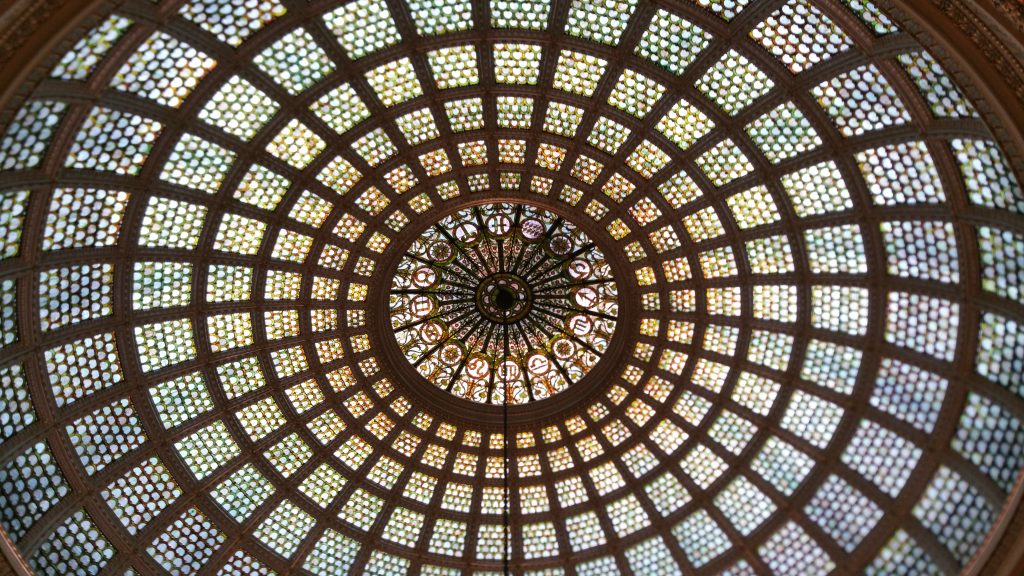
Keeping with its function, the Randolph Street entrance is much more subdued. Designed in the Greek Revival style, its lobby is a series of marble spaces, centered around a gently sweeping staircase, designed for aging veterans. On the second floor, a 40 foot Healy & Millet leaded glass dome marks the entrance to The Grand Army of the Republic war memorial.
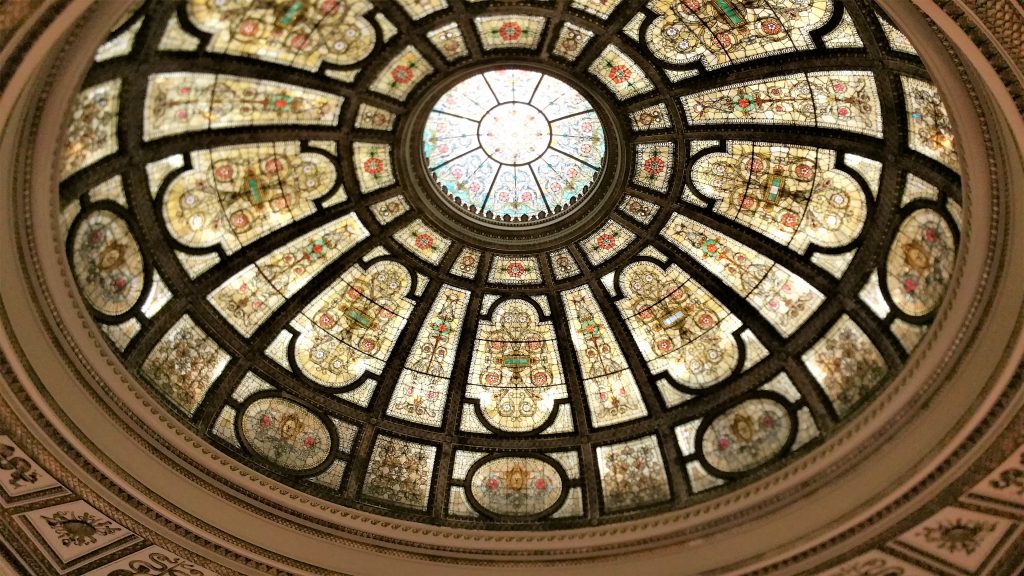
Beyond the immense rotunda, is the grand Memorial Hall. Above, carved coffered ceilings; on the walls, Vermont marble engraved with the names of Civil War battles. It is a somber space, made for reflection. The G.A.R. occupied the space until 1948, when few veterans would have been left to visit its hallowed halls. It later displayed a collection of Civil War artifacts, and today acts as exhibit space.
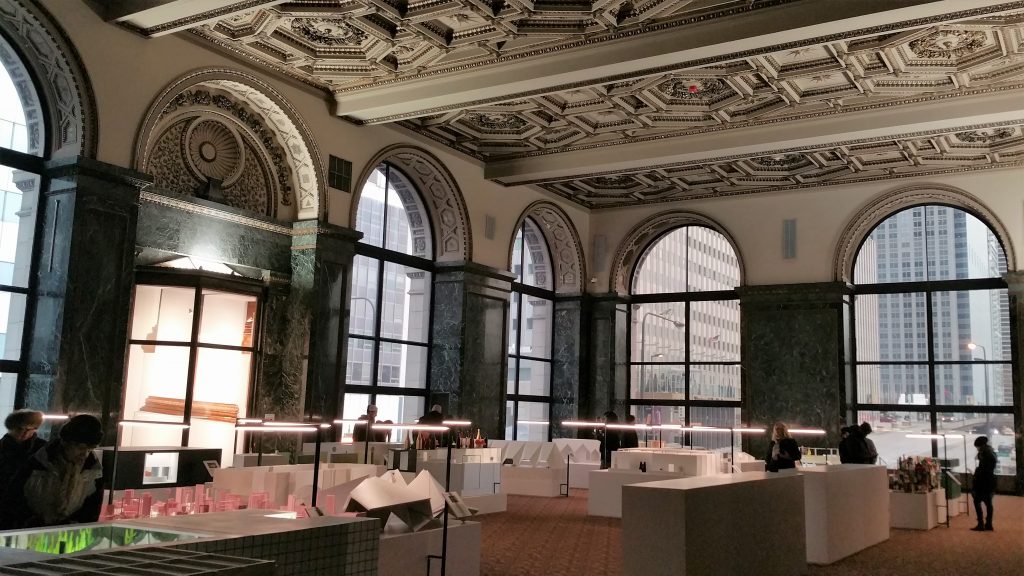
As for the library, the collection outgrew the space by the 1930s. Amazingly, this fact was discussed and debated for the next several decades, with some suggesting the existing building be razed. Fortunately, preservationists rallied, and were able to get the building placed on the National Register of Historic Places. The library was moved to a new location, and the building was protected from demolition. After an extensive three year renovation, the building reopened as the Chicago Public Library Cultural Center.
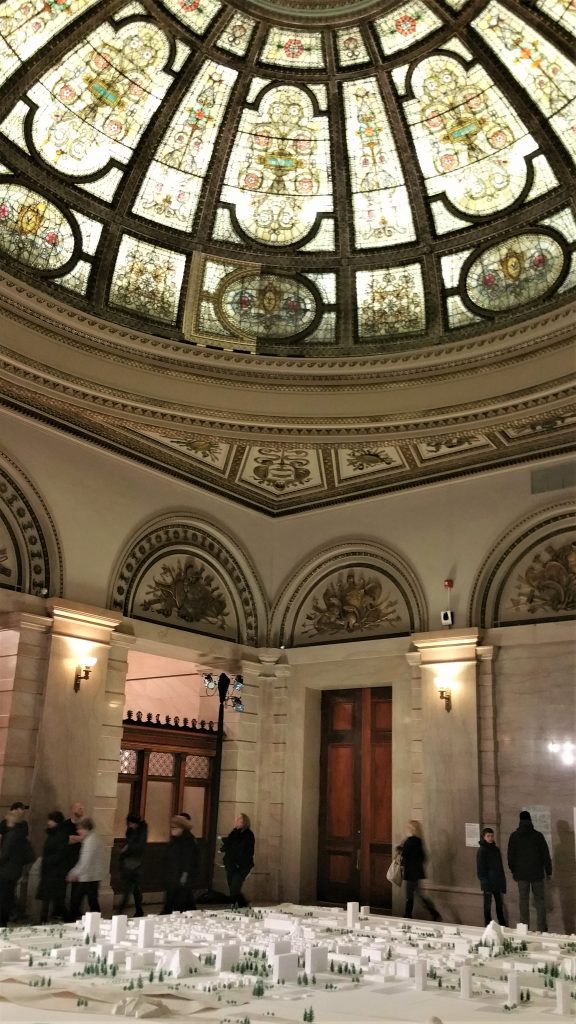
It is a magnificent building, with two very different, absolutely stunning spaces. Anyone who appreciates arches and architecture will enjoy a visit. However, it is very busy building, with several exhibit and event spaces; anyone who wants to photograph the space should show up when the doors open, otherwise unpeopled pictures are practically impossible. You certainly can’t go wrong with multiple visits, as you will surely find hidden details you previously missed.

